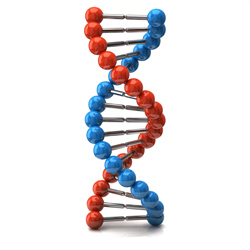Bone marrow recipient's DNA partly changed after procedure; what are the implications for law enforcement?

Image from Shutterstock.com.
A Nevada man who received a bone marrow transplant underwent a blood test and discovered that some of his DNA had been replaced by that of his German donor, a finding that could have implications in criminal investigations.
The man, Chris Long, is an information technology employee with the Washoe County sheriff’s department in Reno. Tests revealed new DNA in his blood, semen, and lip and cheek swabs, the New York Times reports in stories here and here.
Long had agreed to DNA testing before and after the bone marrow transplant at the suggestion of a colleague who ran the crime lab for the sheriff’s office.
The tests revealed that Long had become a chimera, which means that he had two sets of DNA. The second set of DNA is not likely to be harmful or to change a person, the articles explains. Nor could such a person pass along the new DNA to offspring, since the new DNA is in white blood cells but not in semen. Long had had a vasectomy, which left only white blood cells in the DNA sample.
But the findings could affect attempts to identify unknown people or to identify suspects based on evidence collected at crime scenes, the New York Times points out. It has already confounded investigators in at least two cases.
In 2004, Alaska investigators uploaded a DNA profile from semen to a DNA database and found a match. But the person was in prison at the time of the assault. It turned out that he had received a bone marrow transplant from his brother, who was eventually convicted in the case.
In another case, a sexual assault victim said there had been one attacker, but DNA pointed to two suspects. Police later determined that one of the DNA profiles belonged to the victim’s bone marrow donor.



